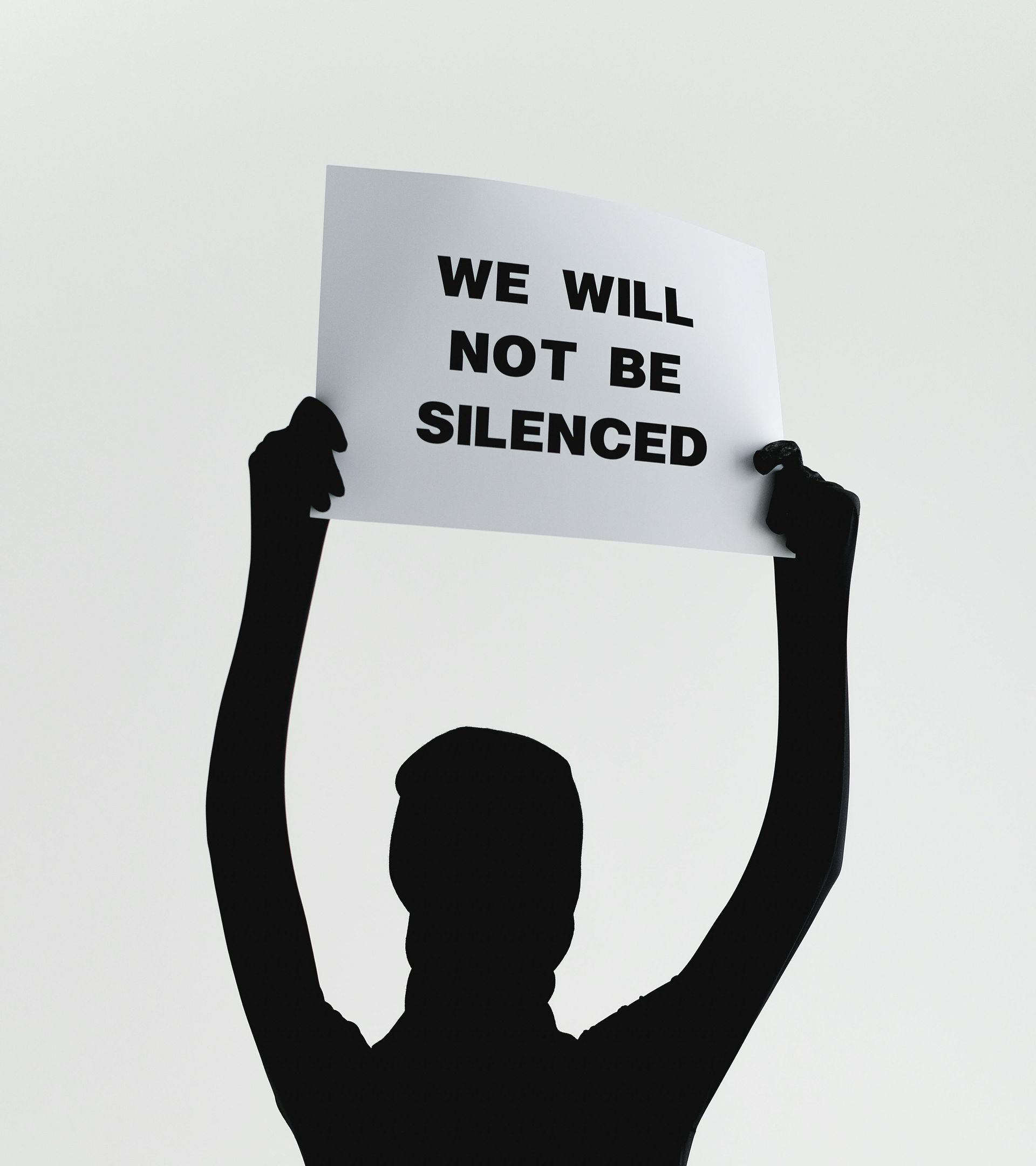Sexual Harassment in the Workplace
Understanding Types, Legal Frameworks, and Effective Solutions.
A workplace is ideally meant to foster productivity, growth, and individual fulfillment of employees as they, in turn, contribute to the realization of the overall desired goal of an entity. The ideal workspace should be respectful, inclusive, and with an aura secure enough to keep a worker excited and motivated enough to report to work to give their best.
Employees are however robbed of the right to experience safety when the environment turns toxic, toxic enough that they are demotivated and unwilling to give their best, and in the extreme, wish to quit the space. A toxic work environment is characterized by hostile and negative atmospheres that impact the well-being and productivity of the employees and causes them to battle with stress, anxiety, and fear among other impacts.
Sexual harassment is one of the practices that leads to toxic work environments. This is any unwelcome conduct of a sexual nature that results in physical, psychological, or sexual harm, that might reasonably be expected or be perceived to cause offense or humiliation, when such conduct interferes with work, is made a condition of employment, or creates an intimidating, hostile or offensive work environment (Edlund, 2020). Everyone in the workplace is prone to sexual harassment, this includes workers in both low and high-managerial positions, service providers, and persons that interact with the workspace.
Quid Pro Quo (something for something) harassment and Hostile environment harassment are the two types of sexual harassment (June 2012).
(Kiwalabye, 2017) throws light on the various manifestations of sexual harassment in the workspace, that are either subtle enough to be ignored or direct enough to leave unnoticed. These take the forms of, but are not limited to;
- Unwanted sexual attention,
- Any unwelcome physical touch
- Sexual remarks on a person’s body or clothing,
- Sexual questions or jokes,
- Sexual assault and rape at the workplace,
- Receiving career threats upon refusing to accede to date or sexual favors,
- Verbal sexual harassment such as someone being addressed in a sexually offensive manner
- Displaying sexually explicit materials in the workplace without educational or work-related motives.
How Sexual Harassment at workplaces impacts workers
Sexual harassment in the workplace may cause victims short-term and long-term negative effects. It leads to depression and post-traumatic stress. Individuals may feel humiliated, lose self-esteem, and more. It may also lead to workplace problems like higher turnover, absenteeism, and decreased work performance (Yie & Ping, 2021).
The authors further stipulate that employees of various genders that have experienced sexual harassment experience negative emotions ranging from embarrassment, shame, depression, a decrease in self-esteem, and lack of job satisfaction to compromised safety.
In addition, sexual harassment at work may result in the likelihood of conducting substance abuse, experiencing Post-Traumatic Stress Disorder (PSTD), and in the extremes, development, and execution of suicidal tendencies (Yie & Ping, 2021)
Legal Frameworks on sexual harassment:
National frameworks
- The Constitution of the Republic of Uganda, 1995
- The Employment Act, 2006
- The equal opportunities Commission Act, 2007
- The Penal Code Act, cap 120
Regional-level Policy and legal framework
International frameworks
- Convention on the Elimination of all Forms of Discrimination Against Women, 1979
- Beijing Declaration and Platform for Action, 1995
- The International Labor Organization Convention on Violence and Harassment in the World of Work, 2019 (ILO C190)
While having a robust sexual harassment policy in a workspace is plausible, it is not an absolute mechanism to completely wipe out the vice of sexual harassment in the workspaces. A regular review and update of the policy are needed to ensure it responds to the changing context of sexual harassment so it remains effective, informative, and relevant but also aligns with the current ideal practices and expectations in the workplace.
Responding to sexual harassment in the absence of legal and policy frameworks
In a rare situation that there isn’t a legal or policy framework to respond to a sexual harassment situation, most likely in an informal setting, these outlined interventions can be used to deal with the situation head-on;
- Speaking Up! Should you encounter any form of sexual harassment, there is power in airing it out. Openly speak about how you feel about the situation. It is important because there are subtle forms of sexual harassment that may go unnoticed
- Confide in a colleague you trust
- Document the sexual harassment incident. Gladly it’s an era of technology, taking videos, and making use of camera recordings are important in reporting the case
- Leverage the support mechanisms of other work entities. These could be partners, networks, or companies/organizations that have established legal or policy frameworks that address sexual harassment. These could avail information and support a victim on the required steps needed to take to reach justice and healing.
The procedure for handling sexual harassment complaints (Act, 2023)
Upon receipt of a complaint, the labor officer shall promptly investigate a complaint by taking the following steps;
- Register the details of the complaint in the form prescribed in the Second Schedule
- Interview the complainant to ascertain the facts of the matter;
- Obtain from the committee the written report of their investigation and decision on the complaint;
- Notify the employer of the complaint and direct the employer to respond to the complaint;
- Investigate the complaint to ascertain the facts to the extent practicable, throughout the investigation and consult the union office where a union exists in the establishment
- In case of a labor officer not being a labor Commissioner, dispose of the complaint or refer it to the Labor Commissioner in case of deadlock;
- Inform the employer and complainant of the decision in writing;
- Inform the employer that he or she will not engage in retaliation against the complainant or anyone else who cooperates with the investigations;
- Order the employer to separate the complainant and the person alleged to have harassed to avoid further harassment without adverse discrimination affecting their working conditions; and
- Continuously monitor the interim measures that are being taken by the employer throughout the investigation and after that
The emotional gap in legal and policy frameworks
Policies and laws alone cannot be completely effective tools to prevent and respond to sexual harassment. Victims of sexual harassment, who are absolute emotional beings, are at the core of response and intervention, and policies cannot fully address the emotional scars that sexual harassment can have on an individual, both at the workplace and in spaces beyond work. It’s plausible that these policy and legal frameworks provide guidelines and consequences for the vice. They also may not be enforced adequately and under the fact that they are frameworks, the language therein could be limiting enough for the victims to hold back on reporting for fear of retaliation of the unseen or unclear consequences.
It is therefore most important to have support systems in workplaces that are preventive, restorative, and responsive. These systems may include;
- Establishing sexual harassment committees in the workplace to register complaints, investigate and respond to the complaints.
- Readily available counseling services,
- Training of all individuals (employers, employees service providers, and all individuals that are affiliated with the workspace) on sexual harassment
Employers should therefore be in a position to identify and respond to situations that depict sexual harassment and take measures to prevent sexual harassment and generally promote a safe working environment for all workers in the space.
References
Act, E. (2023). Employment ( Sexual Harassment ) Regulations, 2012.
Edlund, C. (2020). Prevention of Harassment, Sexual Harassment, Discrimination, and Abuse of Authority Policy. UNWomen, 1–18. https://www.unwomen.org/sites/default/files/Headquarters/Attachments/Sections/About Us/Accountability/UN-Women-Harassment-sexual-harassment-discrimination-and-abuse-of-authority-policy-en.pdf
June, I. (2012). Sexual harassment in the world of work. 190, 789. www.ilga-europe.org/resources/glossary
Kiwalabye, F. (2017). Sexual harassment at the workplace : A case study of the Uganda police force. Youth Crime Watch Uganda/IgnitusWorldwide Uganda, P13.
Williams, T. H., & Williams, N. M. (1999). Preventing and responding to sexual harassment. Family Practice Management, 6(9), 32. http://search.ebscohost.com/login.aspx?direct=true&db=cin20&AN=1999073011&site=ehost-live
Yie, C. E., & Ping, N. T. S. (2021). Sexual Harassment in Workplace: A Literature Review. The International Journal of Humanities & Social Studies, 9(8). https://doi.org/10.24940/theijhss/2021/v9/i8/hs2108-023











